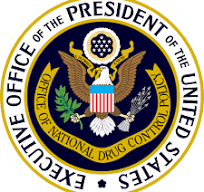Alternatives to Incarceration: Alternatives to Incarceration A Smart Approach to Breaking the Cycle of Drug Use and Crime

Overview
Decades of research indicate a strong link between drug use and criminal behavior. Drug-involved offenders significantly strain state and local correctional and community supervision systems. Upon release, these offenders often revert to drug use and criminal activities, leading to re-arrest and re-incarceration. The Administration views addiction as a disease, requiring public health and safety interventions.
Current Statistics and Costs
- Nearly seven million American adults are under state and federal criminal justice supervision, with about two million incarcerated and five million on probation or parole.
- Between 1988 and 2009, state corrections spending increased from $12 billion to over $50 billion annually.
- Parole violators accounted for a significant portion of prison admissions in 2009, and a substantial number of drug-dependent prisoners have multiple prior sentences.
Innovative Strategies
Smart Probation Strategies
- New programs like Alaska’s PACE, Delaware’s "Decide Your Time," and Arizona’s SAFE program show promise.
- These initiatives combine regular drug testing with swift, certain, and modest penalties for violations.
- Hawaii's HOPE program, launched in 2004, has been particularly effective, showing significant reductions in re-arrest rates, drug use, and probation violations among participants.
24/7 Sobriety Project
- South Dakota's 24/7 Sobriety Project targets repeat DUI offenders, requiring full sobriety monitored through frequent testing.
- The program has shown a high success rate in maintaining participant abstinence from alcohol and drugs, with substantial reductions in reoffending rates.
Drug Courts
- Drug courts have operated for over 20 years, promoting collaboration among various judicial and community support groups.
- They provide intensive treatment, frequent court appearances, and random drug testing, resulting in reduced substance use and criminal activity.
- Over 2,600 drug courts in operation today serve approximately 120,000 Americans annually.
- Studies show drug courts significantly reduce criminal activity and drug use among participants, offering a cost-effective solution.
Commitment to Innovation
The Obama Administration is dedicated to expanding these innovative programs and has requested substantial funding for smart probation and problem-solving courts in the FY 2012 Budget. These initiatives aim to improve public safety, reduce recidivism, and provide cost savings.
For more information, visit the ONDCP website at: www.ONDCP.gov.